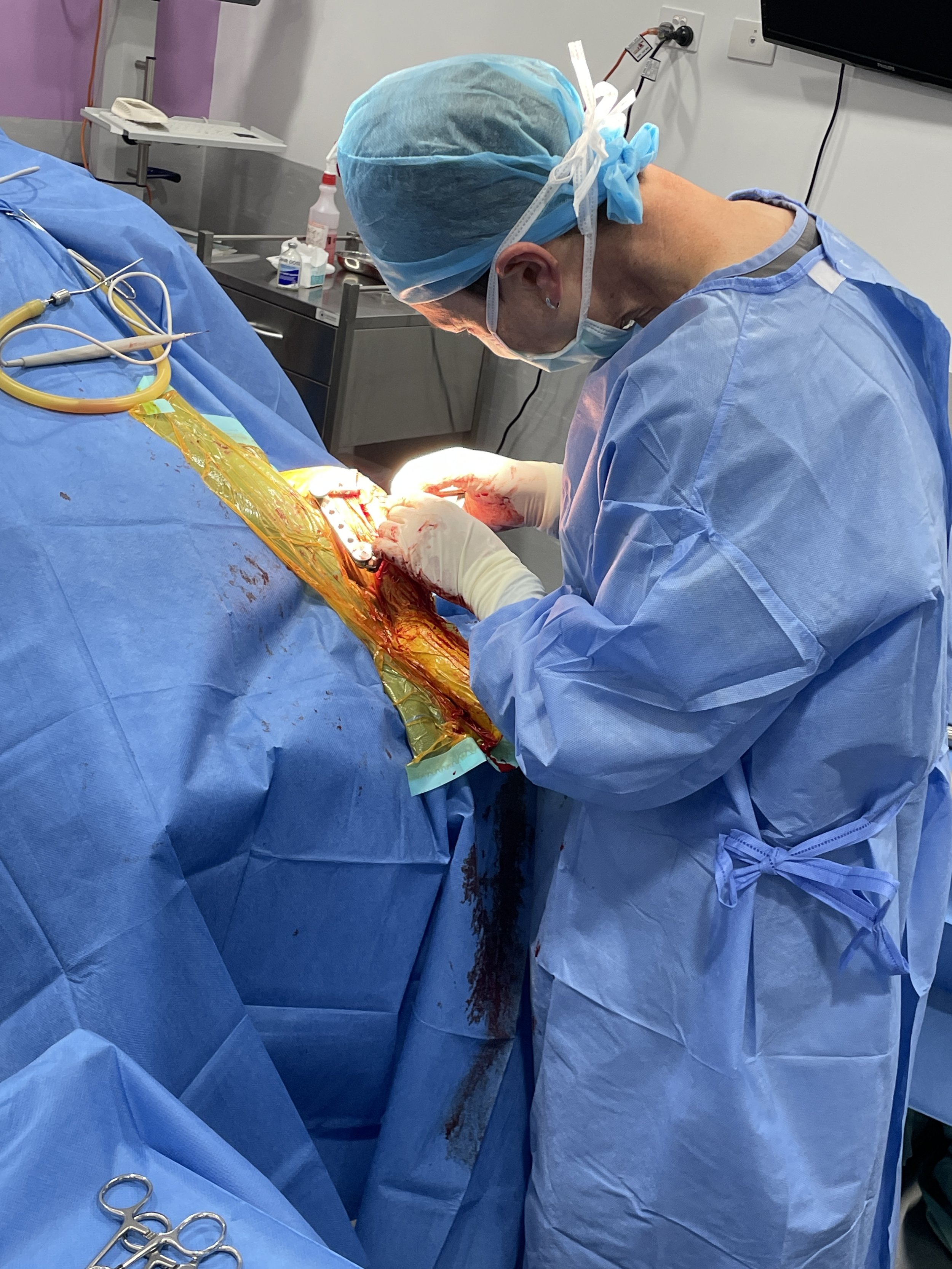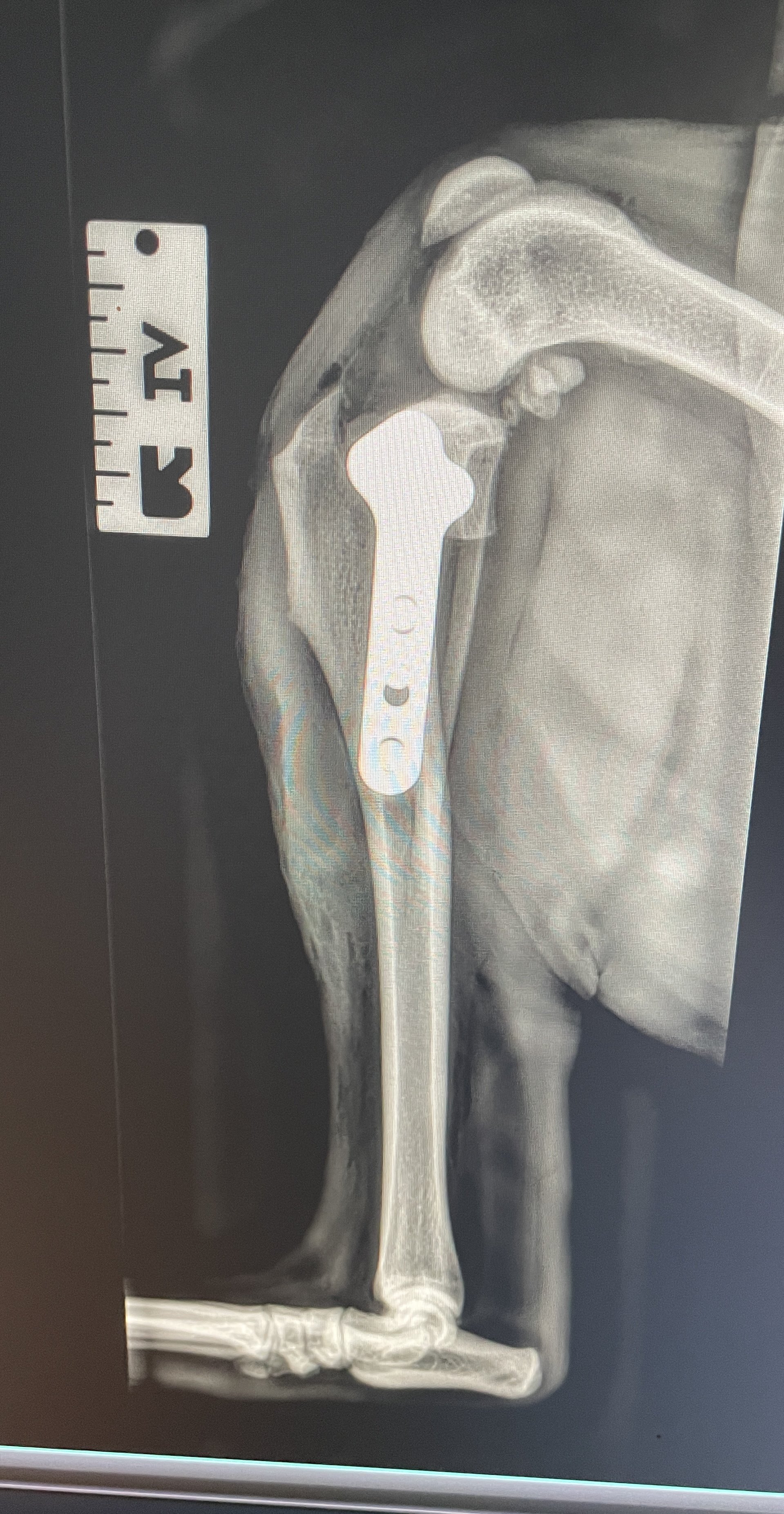TPLO Surgery for Cranial Cruciate Ligament Injury.
Dr Davids performing TPLO surgery
One of the most common orthopaedic injuries in dogs is a torn cranial cruciate ligament (CrCL), which is the equivalent of the anterior cruciate ligament (ACL) in humans. While there are several surgical options to address this issue, Tibial Plateau Leveling Osteotomy (TPLO) is the most effective and reliable treatment for dogs of all sizes.
Dr Davids is an very experienced TPLO surgeon, having performed the procedure for many years in dogs of all sizes.
What is TPLO?
The CrCL is a dog’s knee joint plays a crucial role in stabilizing the knee during movement. When the ligament tears, the knee becomes unstable, leading to pain and lameness.
In a TPLO procedure, the tibia (shin bone) is cut, and the top portion of the bone is rotated to change the angle of the tibial plateau. The rotated segment is then stabilised in the new position with a bone plate and screws. This adjustment eliminates the abnormal force that occurs when the CrCL is damaged.
Benefits of TPLO.
· Improved knee stability and reduction of pain.
· Faster recovery time compared to other procedures, such as the lateral suture technique.
· Better long-term functionality – TPLO has been shown to have a better long-term prognosis, especially in larger or more active patients.
Recovery After TPLO Surgery.
Post-surgery recovery is critical to ensuring the best outcome for your dog, and involves the following general guidelines:
· Pain management - medications will be prescribed to keep your dog comfortable during the healing process.
· Restricted activity - following surgery, activity is limited to on-leash exercise, starting with short walks, with gradual increases each week.
· Physical therapy – this can improve strength and range of motion of the knee joint, speeding up the recovery process.
· Regular vet check-ups – post-op visits are essential to monitor healing and clinical progress.
· Post-operative Xrays – are taken 10 weeks after surgery to ensure that the bone has healed and to give your dog clearance to return to full normal activities.
More detailed written post-operative instructions will be provided upon discharge from surgery.
Complications.
As with any surgery, there are risks involved, including infection and complications related to the bone healing process. This risk is relatively low, with most complications being resolvable with additional treatment. This will be discussed in detail with you during your dog’s pre-surgery consultation.
Prognosis.
TPLO is highly effective in restoring stability to the knee and minimising pain for the dog.
Some dogs may require ongoing management for pre-existing knee arthritis, including joint supplements and anti-inflammatory medications, as well as weight management to reduce strain on the knee.
Post-operative radiographs showing the rotated bone section fixed in place with a plate and screws.


